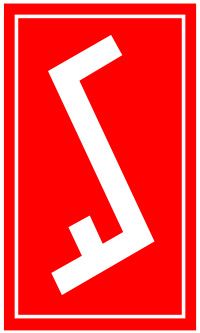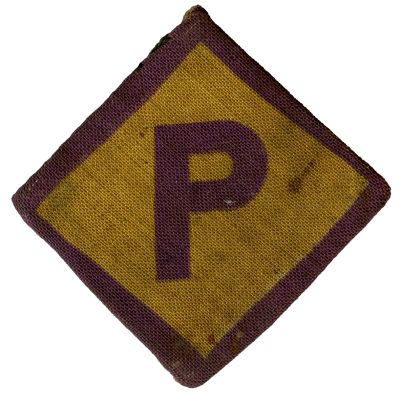The Rodło emblem

After the foundation of the Union of Poles in Germany (the umbrella organisation of Poles in Germany) in 1922, the leadership decided to introduce its own emblem. The German authorities had forbidden Polish organisations to use the colours of Poland on their flags and the symbol of the white eagle. A competition to find a suitable emblem was launched on several occasions but none of the entries resulted in a satisfactory solution. Nonetheless the General Secretary of the Union of Poles, Dr. Jan Kaczmarek, refused to give up on the idea. Kaczmarek originally came from a miner's family and was one of the first academics from amongst the Poles in Westphalia. The preparations for the tenth anniversary of the Union of Poles in Germany provided a welcome excuse to return to the question of the emblem. Stefan Murek, the editor of "Polak w Niemczech" ("The Pole in Germany") suggested the course of the River Weichsel as a leitmotif. In order to avoid any similarity with runic characters and/or the Nazi swastika Dr. Kaczmarek suggested placing Cracow, the cradle of Polish culture. on the course of the river.
A young graphic designer and student at the Warsaw Academy of Arts, Janina Kłopocka, was commissioned to create a design. She submitted several drafts before one of them was finally accepted by the Central Committee and its President Pastor Bolesław Domański. The name of the future emblem was left open, and the committee invited Edmund Jan Osmańczyk a young editor at the “Młody Polak w Niemczech” (“The Young Pole in Germany”), to make a suggestion. Osmańczyk came up with a neologism, “Rodło”, a compression of two words, “ROdzina”(family or tribe) and “goDŁO”(coat of arms). The new name met with general agreement. The artist’s final draft showed the course of the Weichsel, the silhouette of Wawel castle and the name of Cracow in front of a red and white background. Beneath it were the words: "We are Poles. We belong to the Polish Nation, whose cultural cradle is Cracow and its faithful river the Weichsel. These two powerful elements unite our Rodło, which is neither a coat-of-arms nor an emblem, but a symbol of our origin and attachment to the whole Polish Nation and its spirit". The new emblem spread very quickly. It was set on the flag of the Union and the members were given badges with the new symbol of the Union.
The new emblem was used for the first time in public during the "2nd Congress of Poles Abroad" in Warsaw, which took place in August 1934. This was the first manifestation of Poles from different parts of Germany and a demonstration of their attachment to their mother country. The Poles from Germany appeared in public as a single group with their own original flags "wed" with the Weichsel on 5th August. This event received wide press coverage, some of which was misunderstood. A few editors confused the name "Rodło" with a Slav hook plough called "Radło". Around 3000 persons took part in the so-called "Wedding with the Weichsel", during which they processed through the centre of Warsaw carrying the flags of the Union. The flags contained the new emblem and the place name of each local group belonging to the Union. When the procession reached the banks of the river the flags were solemnly lowered into the water. It was not long before the Poles in Germany were called "Rodlaki".


